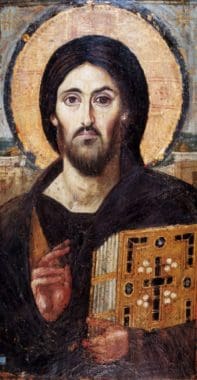Dear Father John, I still struggle with keeping things in perspective. Would you therefore kindly explain what is the essence of authentic Catholic spirituality, i.e., irrespective of whatever tradition one follows (Ignatian, Carmelite, Opus Dei, etc.), and also what are the essential elements of the spirituality. Also what is the relationship between Catholic morality and Catholic spirituality.
 This question is harder to answer than you might think! But we’ll give it a shot.
This question is harder to answer than you might think! But we’ll give it a shot.
In our first post we covered a basic though important definition of “spirituality.” In this post we will briefly cover the nuts and bolts of what a spirituality looks like in practical terms.
Essential Elements on the Road to Holiness
So, spirituality is the road to holiness, which can also be called spiritual maturity. The spiritually mature person lives in communion with God, knowing reality as God knows it (intellect) and wanting what God wants (will).
The essential elements of any Catholic spirituality can be understood as those activities within our reach that are ordinarily necessary for moving us forward along that road to spiritual maturity. Most spiritual writers would agree that the following items ought to be on that list. But here is a warning: this list is not like a shopping list. Catholic spirituality, remember, is about our relationship with God – communion with God through friendship with Christ. So it can’t be reduced to a to-do list. Nevertheless, since that relationship takes place in the arena of faith, we need some concrete reference points to help us keep moving along. All of the following items, therefore, should be considered within the context of that relationship, that friendship with Christ, in the Holy Spirit, to the glory of God the Father:
- Active and frequent participation in the sacraments, most especially the Mass (along with Holy Communion) and Confession
- Active participation in the liturgical seasons
- Personal and family vocal prayer
- Personal mental prayer
- Ongoing study of the Catholic faith
- Ongoing support for the Church’s work of evangelization (this can take many forms)
- Obedience to the basic moral law (summarized in the Ten Commandments) and to the teaching of the Magisterium
- Obedience to the duties of one’s state in life
- Filial devotion to Mary and the Saints
- Some practice of self-denial (ascesis)
- Gradually learning to accept and value suffering (love for our crosses as ways to unite us to Christ’s cross)
Moral and Spiritual
Notice that the moral life actually makes up part of the spiritual life. This is commonly misunderstood. The link between the two comes from the nature of the human person. Our spiritual faculties, intelligence and will, are what make us moral beings. Because our we are able to discern consciously what we ought to do (bananas and badgers can’t), and because we are free to choose whether or not we will do it, we are moral beings. The moral law that we perceive and should follow has been established by God; he is the moral law-giver. In fact, the moral law is a powerful expression of his love for us, since it guides us towards good (a flourishing life) and away from evil. As a result, if we disobey the moral law, we are turning our backs on God. At that point, the potential for our communion with God (which is what holiness or spiritual maturity is all about) is severely hampered, until we repent. Anyone who claims to have a deep spiritual life but is living a reprehensible moral life is deceived.
On the other hand, moral integrity is not the entirety of spirituality. Love and friendship go beyond merely avoiding evil. They search for deeper and deeper intimacy and communion than transcends the limits of the law. The moral laws are like the guard rails on a mountain highway: they keep us from falling of the cliff, but the journey consists of advancing along the road – which, by the way, means that we will never be perfect until we reach heaven; we are always a work in progress, a traveler in statu viae as the Catechism puts it (“in the state of journeying”). In the end, Catholic spirituality is and always will be based on a personal relationship with God in Christ.
That’s a summary of Catholic spirituality in general. The different “spiritualities” (Ignatian, Carmelite, Franciscan…) that have arisen and continue to arise in the Church share all of those elements, but each puts a particular emphasis or a unique spin on one or more element. All great composers have the exact same notes to compose with, but they each somehow develop their own sound. All great painters have the same colors to paint with, but each develops their own particular palette. Likewise in the Church, where the Holy Spirit raises up new spiritual geniuses who forge new spiritual by-ways in accordance with the needs of each time and place in the life of the Church.
+
Art for this post on Catholic spirituality: Christ the Saviour (Pantokrator), a 6th-century encaustic icon from Saint Catherine’s Monastery, Mount Sinai, artist unknown, 6th century, PD-US author’s life plus 100 years or less, Wikimedia Commons.




